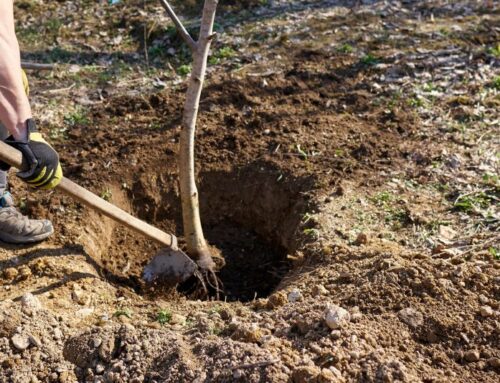By Paul Tibbets - A Plus Chaplain, Director of Special Projects, & Board Certified Master Arborist
With excerpts from An Illustrated Guide to Pruning, by Dr. Ed Gilman
It was after Treetopia and before I left for my home in New Mexico, that I had the opportunity to visit my mother in Antioch. It was a great day and a wonderful visit. We caught up with all of the family gossip and had a delicious lunch at a falafel shop in the nearby shopping center. (Sidebar: I love falafels.) While enjoy our lunch in the shade of the sidewalk trees, I noticed that all of the trees had been pruned with heading cuts. As I studied the trees more, I realized why the trees were pruned with headings cuts. The shopping center was trying to maintain a certain size and building clearance. Sadly, the shopping center management did not know or was not aware of the effects of heading cuts has on trees. Pollarding would better serve the shopping center and the trees.
Pollarding is a great way to maintain a large-maturing tree in a small size. It is common knowledge that shopping centers, commercial/industrial buildings, and tight grouped neighborhoods do not always counsel with a professional arborist when it comes to landscape planning and planting. Too many times, we are called in to fix the problem when it could have been prevented. As arborists, we have to deal with the too close planting to structures and hardscapes, the small soil volume pit they call a planter, and/or the tree that suffers because of the misplacement in the landscape. This all leads to the unfortunate reality that the trees may die and/or have to be removed. The good news is that many trees can be saved and encouraged to be heathy and thriving through pollarding.

Pollarded Trees
Where do we begin?
- It would be best to begin at planting. If you know the area will be limited in size and soil volume, the client is not necessarily limited to shrubs.
-
- Pick a tree species that is known to respond well to pollarding
-
-
- Acer
- Aesculus
- Crataegus
- Erythrina
- Fraxinus
- Liriodendron
- Morus
- Platanus
- Quercus
- Tila
- Ulmus
-
-
- Inform the client that this is 2 - 10-year process
- Allow the tree to grow for 2 - 5 years before pollarding.
-
- During this time focus of young tree structural pruning
- Create a strong central leader with good branching
- Develop a final aesthetic look for the tree. Know what you want before you get there.
- The height of the tree should be 5 to 30 feet or very close to the desired or designated height for the property
- Choose the first heading cut carefully. There is so much more work if you need to reposition the branching later.
- Now annually, schedule pollard pruning cuts with the goal to create a pollard head.
-
- Once the pollard head (the swallow knob at the end of the branch) has been created only the sprouts have to be removed annually.
- The pollard head will create the necessary callus wood to protect the tree from decay.
- On some applications, pollarding can be done every other year or every three years. But it is not advise to go much longer between prunings.

Repeated topping creates an ugly, messy tree with many dead stubs that can cause a decline in tree health (top). Pollarding is cleaner, more professional, and healthier for the tree (bottom).
FYI: A tree can be maintained in the desired size with headings cuts but will have a short life, a few decades. Pollarding will maintain a desired size and allow the tree to live and thrive for well over a hundred years.






